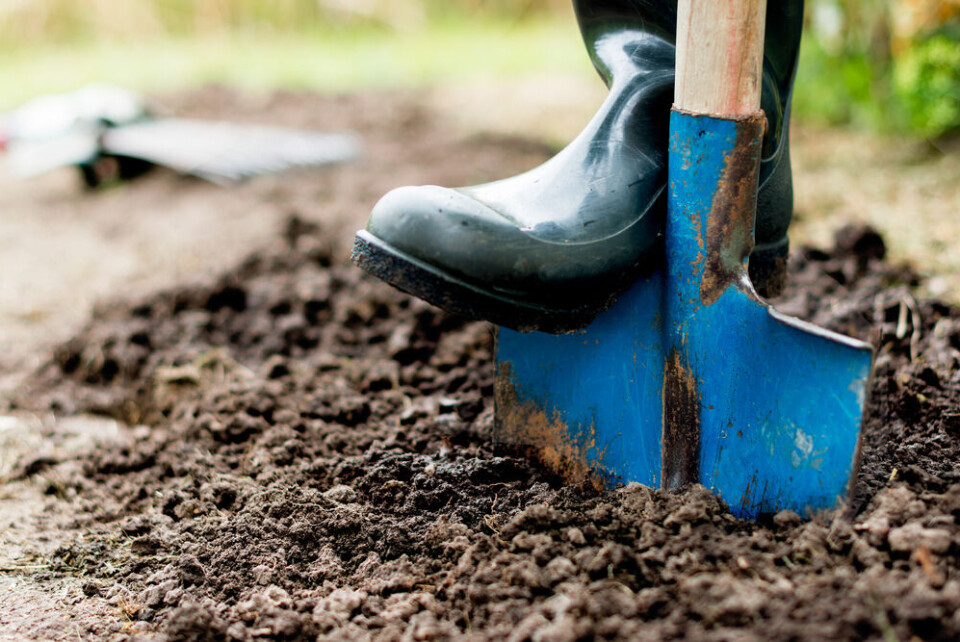-
Drinking tap water restricted for children in south-west France communes
Haute Garonne prefecture says the measure is precautionary and due to high chlorate levels
-
France targets imports from South America over banned chemical concerns
Avocados, mangoes, and cherries among food items set to be tested before entry
-
January flowers in your French garden with scented viburnum
Our gardening columnist explores a pretty pink shrub that gives long-lasting winter displays
Plea to plant local flowers in your gardens in France
Gardeners can play a significant role in helping to maintain the country’s biodiversity, a new study suggests

People in France are being urged to plant local flowers in their gardens in a bid to preserve biodiversity in the country, after a study found that some native plants are at risk of extinction.
The study, published in the Scientific Reports journal, found that if gardeners cultivated native flowers and plants - instead of exotic species - the overall threat level to native flora of Germany would decrease by 25%. Other countries, including France, could benefit from the same approach, researchers said.
They termed the method ‘conservation gardening’.
It is not clear how much of this type of gardening would be needed to stop the loss of plant biodiversity, the researchers said, but added that individuals can help enormously, because only a small portion of land is public. The approach would help gardens to become more biodiverse overall, they said.
“Protecting an individual [plant] is pointless if its habitat has not been safeguarded,” said Sébastien Filoche, the deputy scientific director of the Conservatoire Botanique National du Bassin Parisien, to Le Figaro (who was not involved in the study).
“No living species will be viable over time outside its natural environment,” he said. Instead, he recommended that extra steps such as avoiding the use of concrete over green spaces, and not mowing the lawn too often are key ways to give local flora a chance to thrive.
Yet, Bruno Cornier, a botanist (also not involved in the study), said: “Focusing on vulnerable plants is a pertinent approach. It could strengthen the affected species and their genetic variety, while also creating a form of environmental continuity for migration.”
He added that the approach could reduce the risk of invasive species spreading. He also warned that “these initiatives will never replace the protection of habitats, which must remain our absolute priority”.
5,000 indigenous plant species in France
France has around 5,000 known indigenous species of flora, but of these, 700 are considered to be endangered by the IUCN Red List of Threatened Species.
This is due to factors including farming and over-farming, pesticide use, the change to new agricultural techniques, competition from exotic species, or over-picking.
In the report, the researchers aimed to offer solutions to the problem by listing native species that gardeners can grow in green spaces, private gardens, or even in balcony pots. They found that native species are more tolerant of drought, and require less fertiliser or plant feed to thrive.
The authors of the study have now developed an app that enables users to search for the best species to plant in their area. It is focused on Germany, but can also offer insights for France.
‘Local plants often seen as weeds’
Despite the study, a researcher at the Muséum national d'Histoire naturelle told Le Figaro that he is sceptical about the public’s desire to plant native species. Thomas Haevermans said that the idea was good, but that “local plants are often seen as weeds in gardens…even if they’re pretty”.
He highlighted plants such as geraniums, wolfsbane (also known as monkshood or aconitum), and sage. Some of these are rare in florists and garden centres, he said.
However, some gardeners in France are catching on to the approach, including in Centre-Val-de-Loire, where around 60 species of tree and shrub were highlighted as native to the region.
Pascale Larmande, an ecologist at the Agence Régionale de la Biodiversité, said that these plants “have the advantage of being adapted to our soil and the regional climate”.
“What’s more, they meet the needs of small wildlife, particularly pollinators and birds,” she said.
In Centre-Val-de-Loire, residents and local authorities can now consult a regional guide to help them choose the best varieties to plant, including rare fruits and vegetables (with the exception of protected species, as their cultivation is highly regulated).
The website also offers tips to gardeners for how to grow without pesticides, and attract good insects and animals into your garden to promote biodiversity.
It comes after President Macron committed in 2021 to allocating €50million to help France grow 7,000km of hedges in the countryside by last year (2022), to promote increased biodiversity nationwide.
Related articles
Biodiversity: Are Asian ladybirds threatening their French cousins?
The company that is bringing new forests to life in France
























